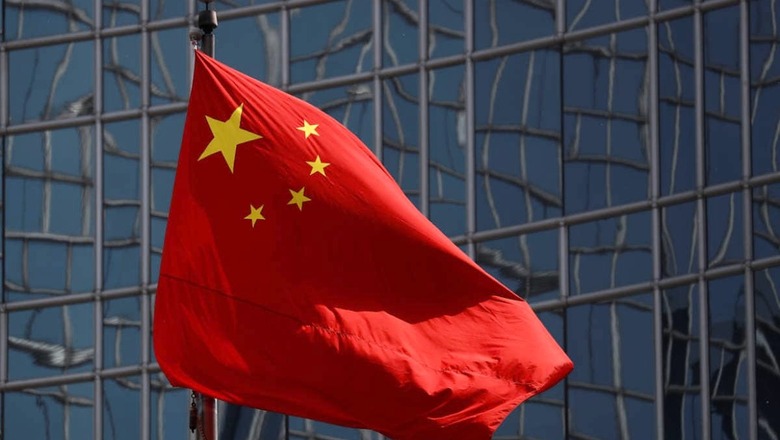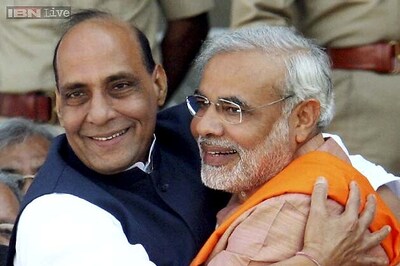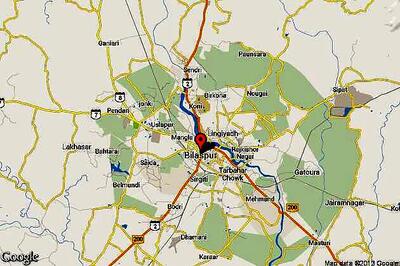
views
Prime Minister Narendra Modi’s said during the Quad summit that the group ‘has come of age and will be an important pillar of security in the Indo-Pacific region’. It perfectly captures the essence of the Quadrilateral Framework.
With China’s rising military maneuvering in the Indo-Pacific region, formation of the Quad has become a necessity.
China’s economic and military rise threatens future trade and military security equations in the Indo-Pacific region as Beijing has increasingly shown an aggressive behavior on territorial disputes with an expansionist mindset, be it towards India, or by threatening Japan in the East China sea, where it is involved in the territorial dispute over the Japanese Senkaku Islands. The growing militarisation of the South China Sea can also be taken into case – where the country is creating artificial islands as military bases in its increasingly aggressive behavior to claim the whole area as Chinese territory. The threat of growing militarisation by China in the Indian Ocean region, with its first overseas power base in Djibouti, is also worrying.
Though Djibouti has military base of the US, France, Japan, Italy and other countries as well, we must not forget that China has said that it is in the process of creating more military bases abroad. Beijing, in fact, has taken operational control of strategically important Gwadar Port in Pakistan and Hambantota Port in Sri Lanka and, can use them as naval base in future.
In 2019, a Pentagon report assessed that China was working to develop its military bases across the world. In 2020, Pentagon came with another assessment that China was looking to establish military bases in 12 countries including three in India’s neighborhood – Pakistan, Sri Lanka and Myanmar. Other countries that China is eying include Singapore, Thailand, Indonesia, UAE, Kenya, Seychelles, Tanzania, Angola and Tajikistan.
An aggressive China in the Indo-Pacific region is going to directly affect the interests of four large economies and great democracies of the geographical belt, India, the U.S, Japan and Australia before it was too late.
The Indo-Pacific command got prominence in the last decade and today has become a key strategic concept in the US policymaking. For India, the Indo-pacific region means the geographical area of two regions of the Indian Ocean and the Pacific Ocean. It is important for India’s ‘Act East’ policy that coincides with the geographical confluence of the ASEAN, the Pacific island countries, the Americas and the eastern African countries.
China initially rejected this US concept that was proposed first by Japan, that was said to be a trade and economy related one, demanding a free and open Indo-Pacific. Earlier deemed futile by China, the country is taking it very seriously, especially after the four Quad nations have agreed on similar geographical and strategic concept of the region.
And the Quad that was long in making is expected to be the central anti-China tool, especially after the apex level meet yesterday that ended positively with Australian Prime Minister Scott Morrison emphasising that the 21st century world destiny will be shaped by the Indo-Pacific region only.
Top leadership of the Quad countries vowed to keep the region ‘free and secure’. Though China was not named, the core of the message was a warning to it; a country that has treats the region as its backyard, a region where China just doesn’t want to play by the rulebook. The Quad leaders yesterday made it very clear that they would not allow China to reorder the region for its own advantage.
Besides increasingly aggressive Chinese behavior, as written above, China has also not allowed ASEAN nations their share in the South China Sea and despite their request to form a code of conduct, something that is pending since 2002, the country has still not buzzed. China has also made it clear that the UN Convention on the Laws of the Seas will not be bypassed for the proposed code of conduct. Beijing wants dominance not just in Asia but across the world while Indo-Pacific talks about equal status of the stakeholders.
China also wants to dominate the Indian Ocean region, the busiest sea lane that is strategically very near to India’s neighborhood. About 80% of world’s maritime trade passes through the Indian Ocean, including 80% of China’s crude oil supply.
From ‘no Quad’ to ‘go ahead’
The informal platform was conceived after 2004 Tsunami when the US, India, Japan and Australia formed a core group to check the Chinese influence. The concept saw its first informal meeting in 2007 in Manila on the sidelines of the ASEAN Regional Forum summit when top level officials of four countries met but they could not take it further, owing to their internal political and external diplomatic compulsions.
The Quad initiative then saw a hiatus for till 2017.
India had questions that needed answering before it decided to move ahead. One factor was China’s response. Add to it, India already had separate trilateral cooperation with these three countries. Another roadblock was good Sino-Australian ties in a coalition that was perceived to be anti-China.
But China’s aggression under current Chinese President Xi Jinping and the country’s drive to make a China-centric world forced them to revive the platform again. It was equally pushed by the growing closeness between these countries and their increasing hostility towards China.
The four countries met again in Manila in November 2017 ahead of ASEAN summit and decided to re-ignite the Quad initiative. It was the first formal official level meeting. The focus was a free, open, prosperous and inclusive Indo-Pacific region and China’s increasing assertiveness in the region and South China Sea was on the agenda.
After November 2017, high level officials of the Quad nation have met regularly, extending it to ministerial-level meetings. Since September 2019, foreign ministers of Quad have met thrice including the one in February under Biden Administration. These four countries have also come forward to conduct the Malabar naval exercise together now. Japan joined the exercise in 2015 while Australia in 2020. India and the US have been conducting this exercise since 1992.
And with the 1st summit level meeting yesterday, the Quad now has given a clear message that it is all set to challenge the increasing dominance and aggressive behavior by China in the Indo-Pacific region.
Read all the Latest News, Breaking News and Coronavirus News here




















Comments
0 comment